How to Keep Your Plants Alive While You’re on Vacation (The No-Stress Guide)
I’ve been working with plants professionally for a long, long time—from managing massive greenhouse operations to caring for the lush green walls you see in corporate offices. And in all that time, one question pops up more than any other: “What in the world do I do with my plants when I go on vacation?”
In this article
- First, a Little Plant Science (The ‘Why’ Behind the ‘How’)
- Pre-Trip Prep: Setting Your Plants Up for Success
- Which Watering Method is Right for You?
- Low-Tech Tricks for Short Trips (Up to 1 Week)
- Smarter Systems for Longer Trips (1-3 Weeks)
- The Gold Standard: Outdoor and Advanced Setups
- Your Pre-Vacation Plant Checklist
- Inspirational Gallery
The anxiety is totally real. You spend months, maybe even years, nurturing a plant from a tiny little thing into a gorgeous specimen. The thought of coming home to a bunch of sad, crispy stems? Heartbreaking. Trust me, I’ve been there. Early in my career, I lost a whole collection of prized prayer plants during an unexpected heatwave on a week-long trip. It was a tough but valuable lesson in preparation.
The good news is that you can absolutely go on vacation without begging a neighbor to be your plant sitter. It just takes a little bit of planning and an understanding of what your plants actually need. This isn’t about fancy, expensive gadgets; it’s about using smart principles to keep your plants happy and stable while you’re away. Let’s walk through the same methods the pros use.
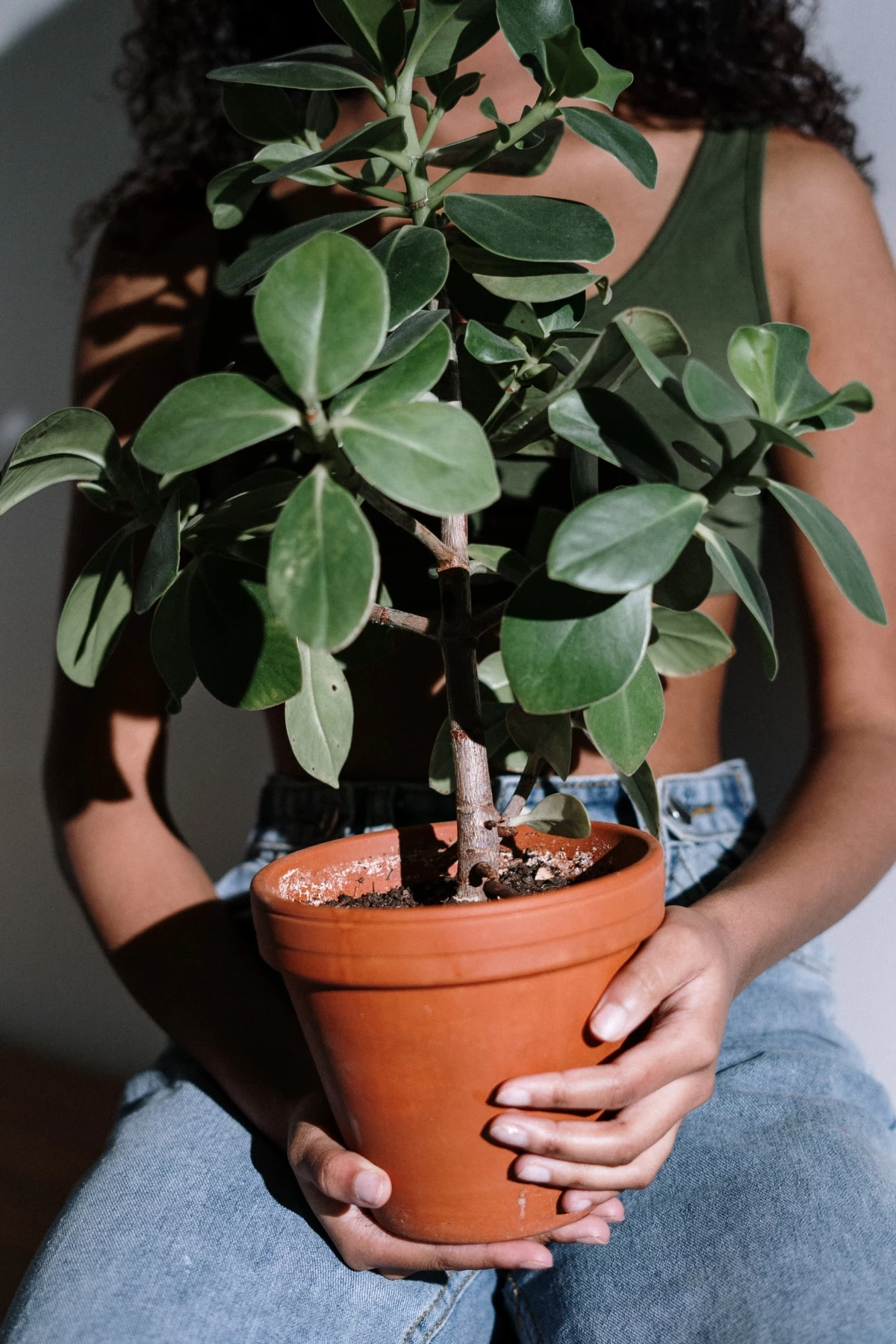
First, a Little Plant Science (The ‘Why’ Behind the ‘How’)
Before we jump into the techniques, it helps to know why this all works. Plants drink water through their roots, but they release most of it back into the air through tiny pores in their leaves. It’s a process called transpiration—think of it as plant sweat. It’s how they cool themselves and pull nutrients up from the soil.
So, what makes a plant thirsty? A few key things are at play:
- Light: More light equals more activity, which means more water use. A plant basking in a sunny window is going to get thirsty way faster than one in a dim corner.
- Heat & Humidity: Hot, dry air pulls moisture from both the soil and the leaves much quicker. A humid room, on the other hand, slows this process way down.
- Pot & Soil: A small pot just can’t hold much water to begin with. And porous materials like terracotta are famous for drying out quickly because they breathe. The soil mix matters, too; a sandy mix drains in a flash, while soil rich in organic matter holds onto moisture for longer.
Your goal is simple: reduce the plant’s need for water and provide a slow, steady supply. That’s the secret sauce behind every method we’re about to cover.
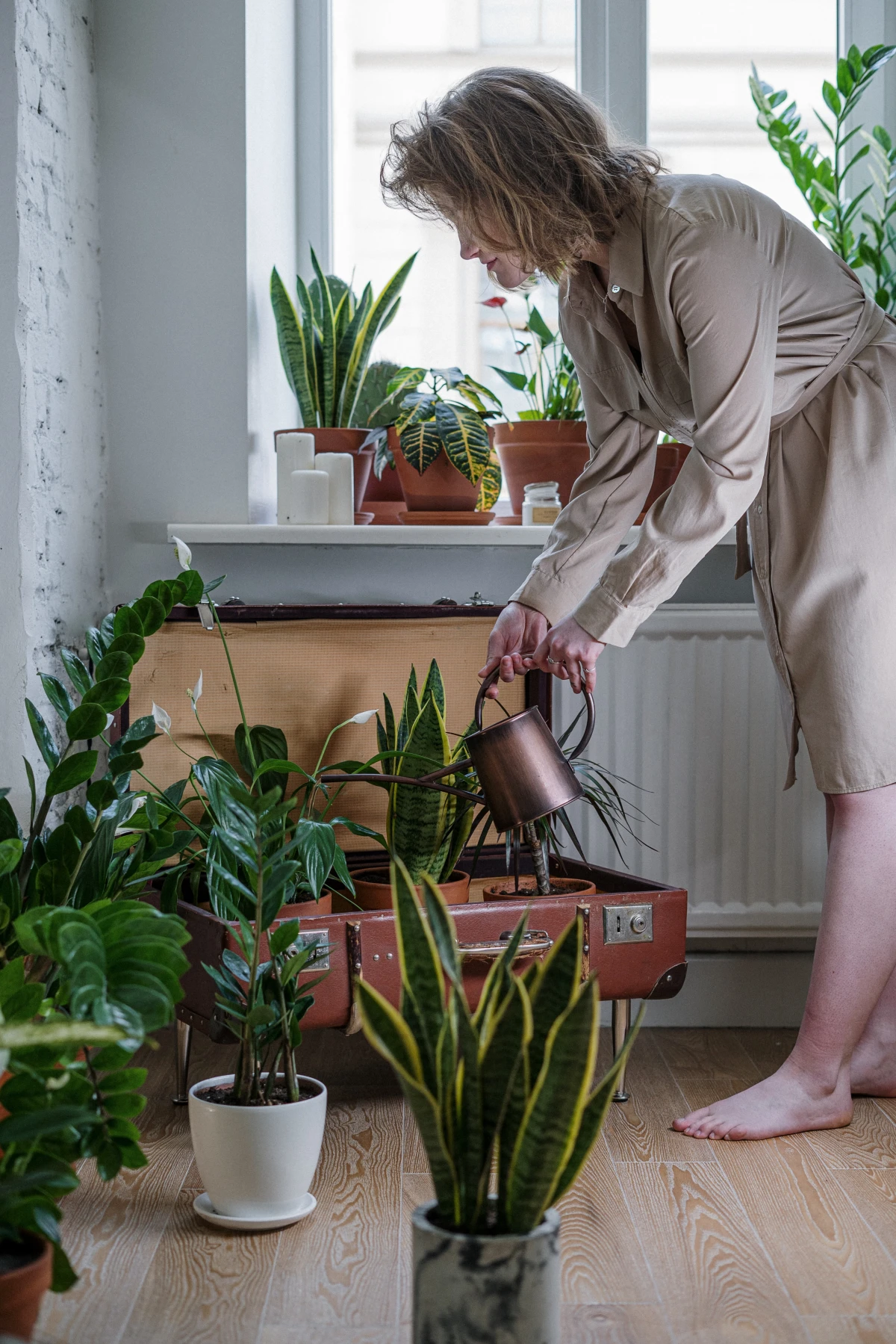
Pre-Trip Prep: Setting Your Plants Up for Success
What you do a day or two before you lock the door is just as important as any watering system. Don’t skip these steps!
1. A Final, Deep Drink
A day or two before you leave, give every single plant a thorough soaking. I don’t mean just pouring a cup of water on top. For most potted plants, I really recommend bottom-watering. Just place the pot in a sink or tub with a few inches of water and let it sit for 30 to 60 minutes. When the top of the soil is damp, you know the entire root ball is fully hydrated. Then—and this is critical—let it drain completely. A plant sitting in a saucer full of water is a prime candidate for root rot, which is way more deadly than a little vacation thirst.
2. A Little Haircut
Here’s a pro trick that feels a little counterintuitive but works wonders: prune your plants. Fewer leaves, flowers, and buds mean less water demand. Snip off any yellowing or dead leaves, for sure. But also, consider pinching off any flowers or big flower buds. They are incredibly water-intensive! A little trim reduces the plant’s overall mass and slows down its ‘breathing,’ making it less thirsty.
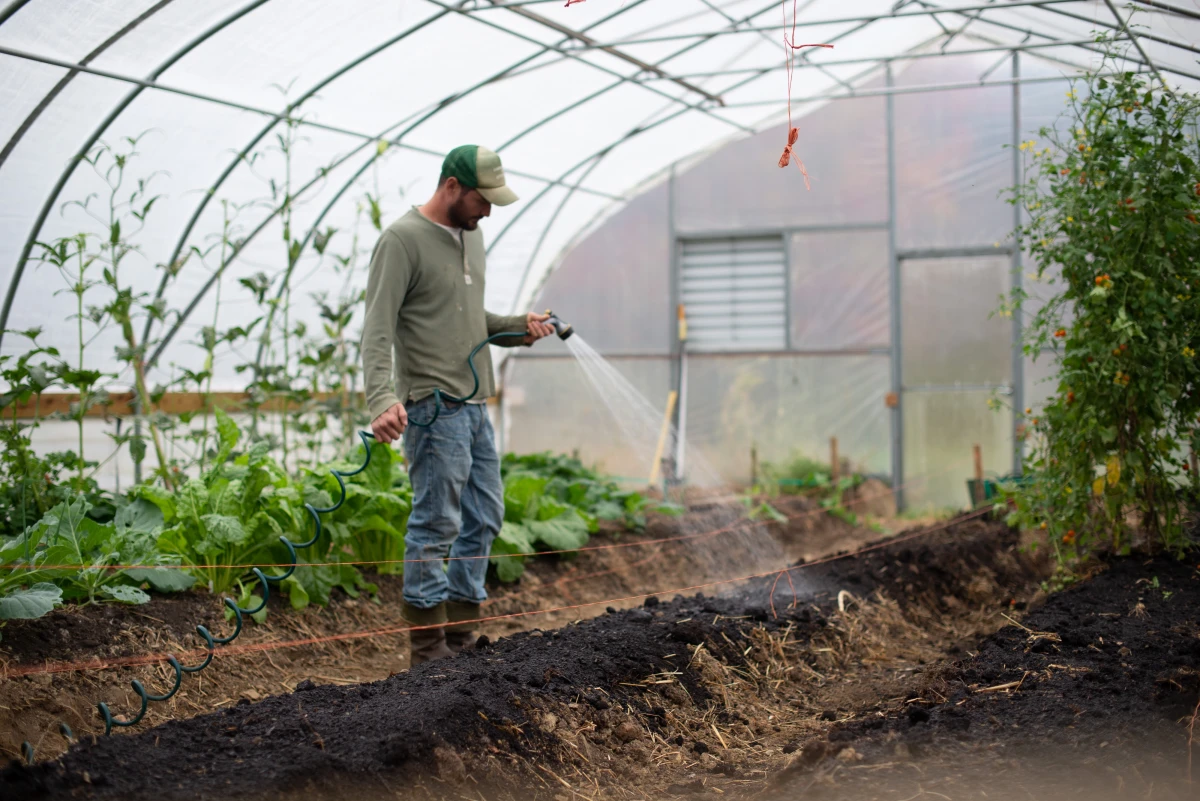
3. Relocate and Huddle Up
This is probably the most effective, zero-cost thing you can do. Move your plants away from bright windows and heat vents. A spot that gets medium to low indirect light is perfect. Just this one change can cut a plant’s water needs in half.
Then, group them all together. As the plants release moisture, they create a wonderfully humid little microclimate for each other. It’s a classic trick for a reason! By the way, try to group plants with similar needs together. Keep your humidity-loving ferns and calatheas in one huddle (the bathtub is great for this!), and your more drought-tolerant snake plants and ZZs in another.
Which Watering Method is Right for You?
Okay, so how do you choose? It really comes down to your trip length, budget, and how much you trust a DIY setup.
For a quick weekend getaway or a trip up to a week long, you can absolutely get by with simple, nearly free methods like a water wick or a plastic bag greenhouse. They’re surprisingly effective and have a low-risk of failure for short stints.
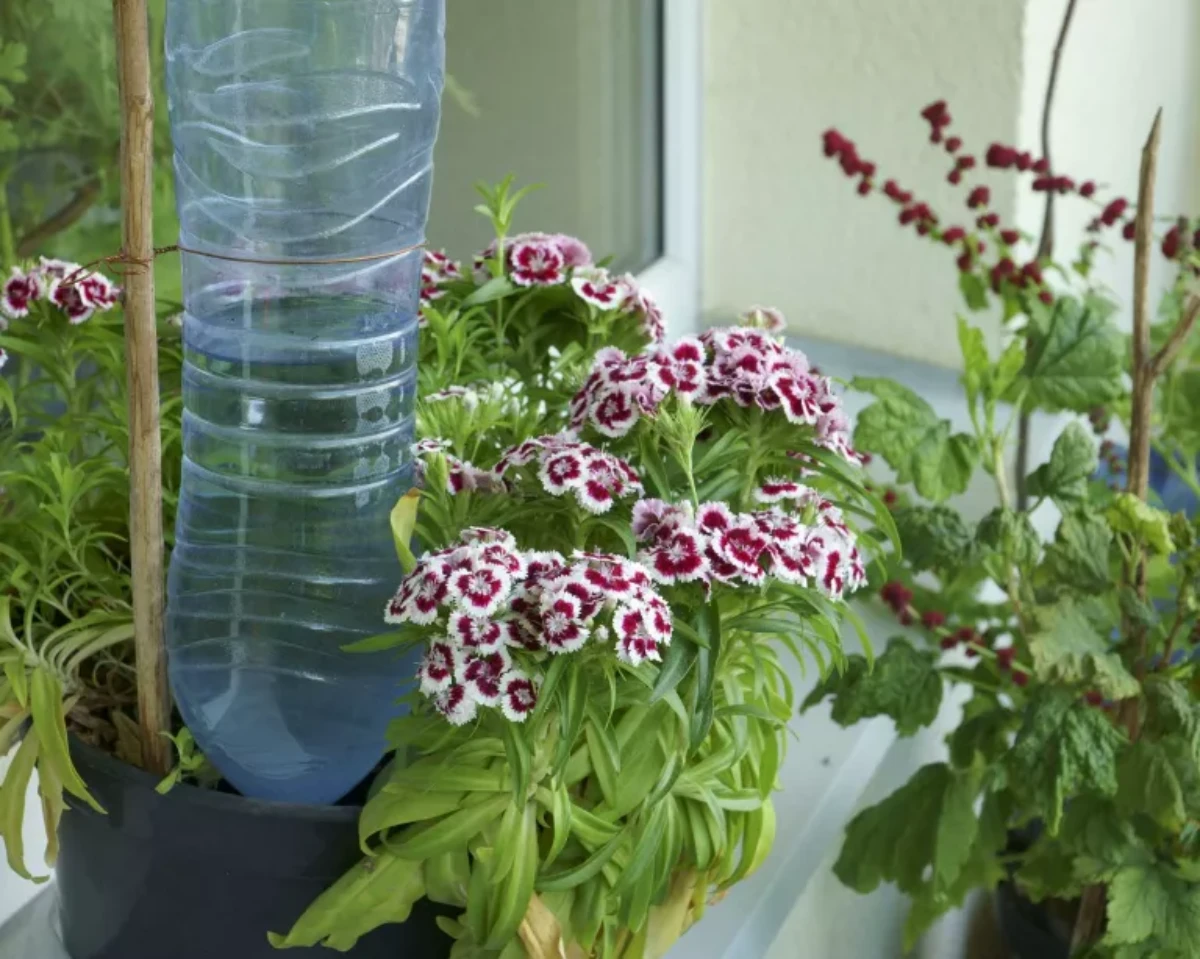
But if you’re looking at a longer trip, say one to three weeks, you’ll need a more robust solution that holds more water. This is where a DIY bottle dripper, self-watering planters, or terracotta spikes come in handy. They require a bit more setup or a small investment but offer more peace of mind.
And for the frequent traveler or anyone with a big outdoor container garden? An automatic drip irrigation system is the undisputed champion. It’s the most reliable option by far, though it does have the highest upfront cost.
Low-Tech Tricks for Short Trips (Up to 1 Week)
The Water Wicking System
This is a classic for a reason—it uses basic physics to pull water from a reservoir right into your plant’s soil. You just need a water container (a big jar or bucket works) and a wick. For the wick, I find thick cotton yarn, felt strips, or even old cotton shoelaces work best. Synthetics just don’t absorb water as well.
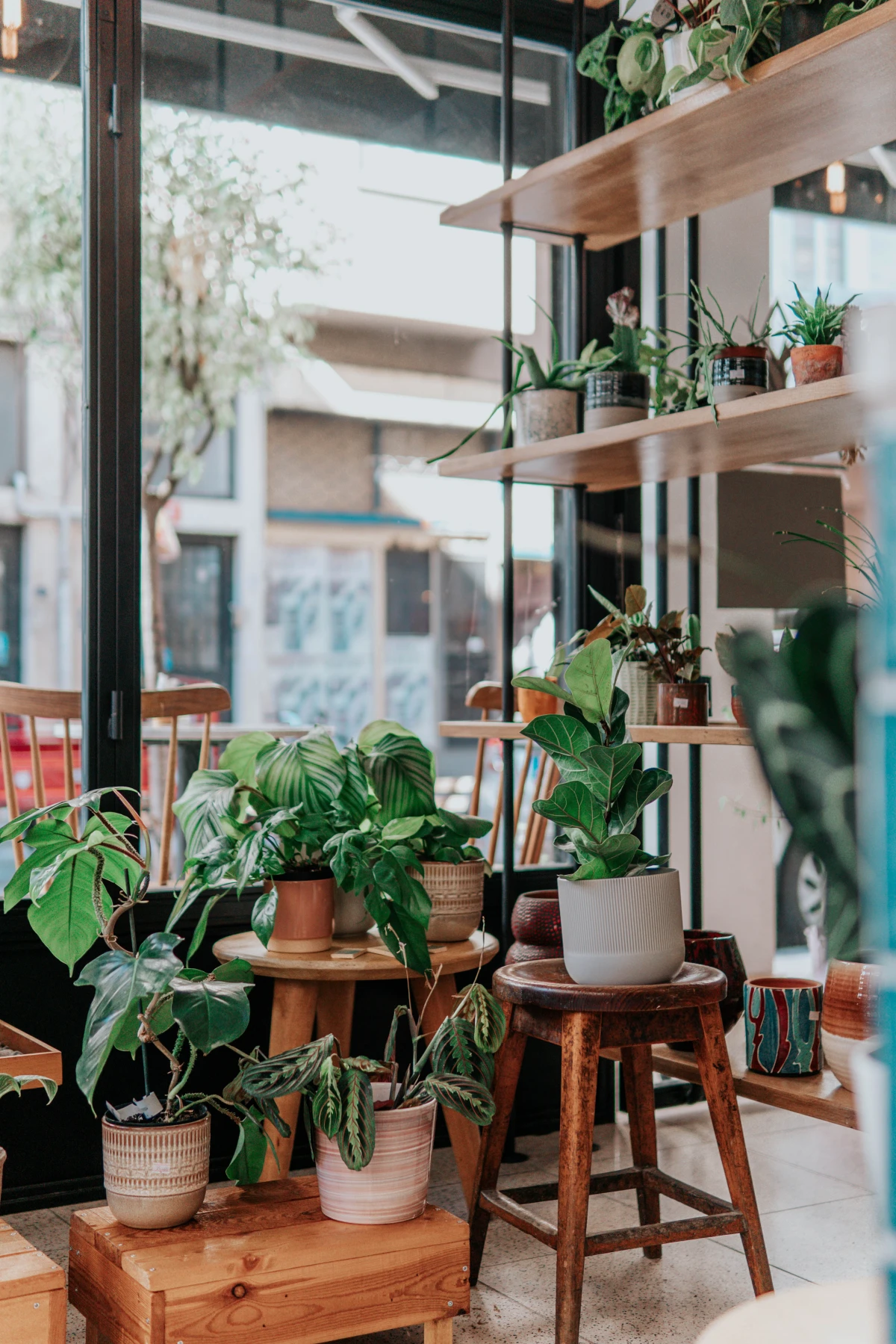
Simply push one end of the wick a few inches deep into the plant’s soil, near the roots. Drop the other end into your water reservoir, making sure it reaches the bottom. For a big pot, you might want to use two or three wicks. As a rule of thumb, I aim for about a gallon of water in the reservoir for each medium-sized plant (think 6 to 10-inch pots) to get it through a week. It’s always better to have too much water than too little!
Quick tip: Pre-soak the wick for a few minutes before setting it up. A dry wick sometimes has trouble getting the capillary action started.
The Mini Greenhouse Bag
This trick creates a super-humid terrarium that dramatically reduces water loss. It’s perfect for moisture-loving tropicals. All you need is a large, clear plastic bag.
After giving the plant a good watering, place a few stakes (like bamboo chopsticks) in the soil to hold the bag up and away from the leaves. Gently pull the bag over the plant and tuck it under the pot. The trapped moisture will condense and drip back into the soil.
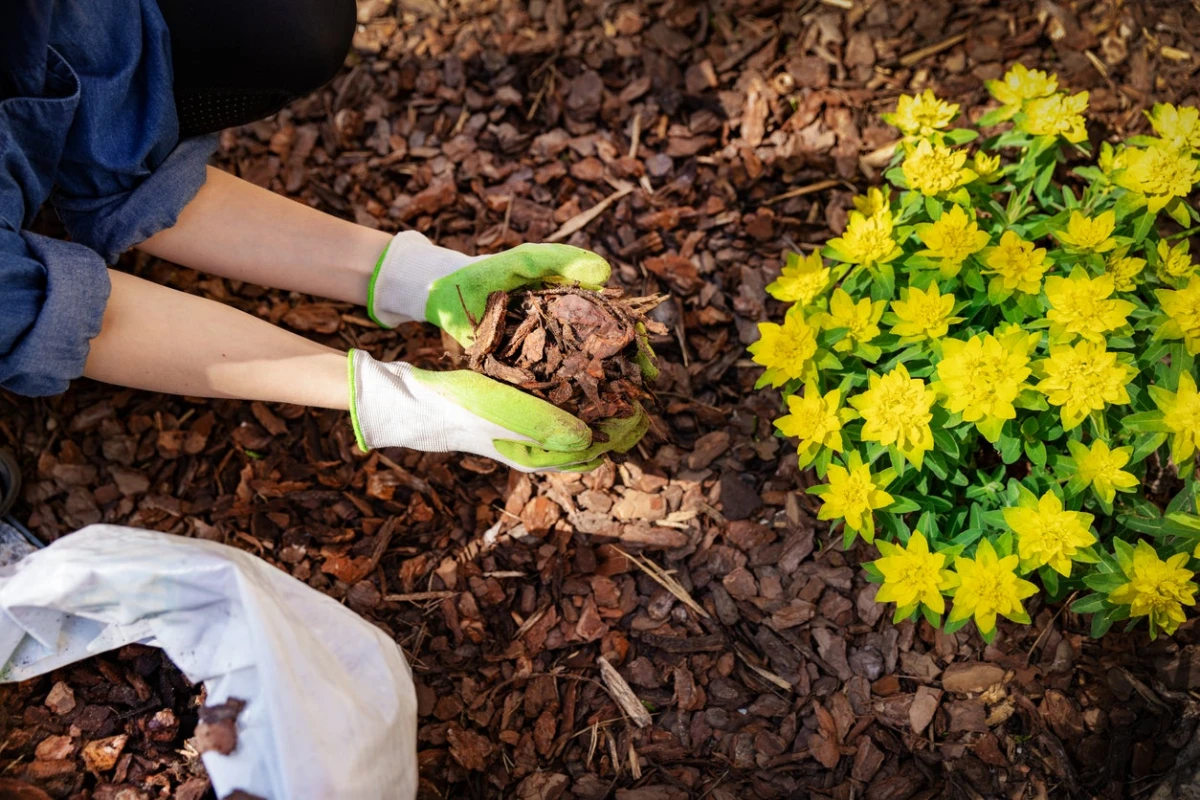
Heads up! This is a super important point. NEVER use this method for succulents, cacti, or plants with fuzzy leaves like African violets—they will rot in the high humidity. And never, ever place a bagged plant in direct sun. It will cook in there. This is strictly for shade-lovers in a low-light spot.
Smarter Systems for Longer Trips (1-3 Weeks)
The Inverted Bottle Dripper
This is a popular DIY, but getting it right can be tricky. You can use a plastic or glass wine bottle. Poke a tiny hole or two in the cap of a plastic bottle, or cover a wine bottle opening with porous fabric. Fill it with water, and quickly stick the neck into the soil.
The biggest headache here is getting the drip rate just right. A quick way to test it? Before you leave, stick your rigged-up bottle in an empty jar for an hour. If you get a few tablespoons of water, you’re in the sweet spot for a slow drip. If it’s half a cup, that hole is way too big. To be frank, a much more reliable option is a set of terracotta watering spikes. You screw them onto a plastic bottle, and the porous clay releases water slowly and consistently. You can grab a 4-pack of those on Amazon or at a nursery for about $15.
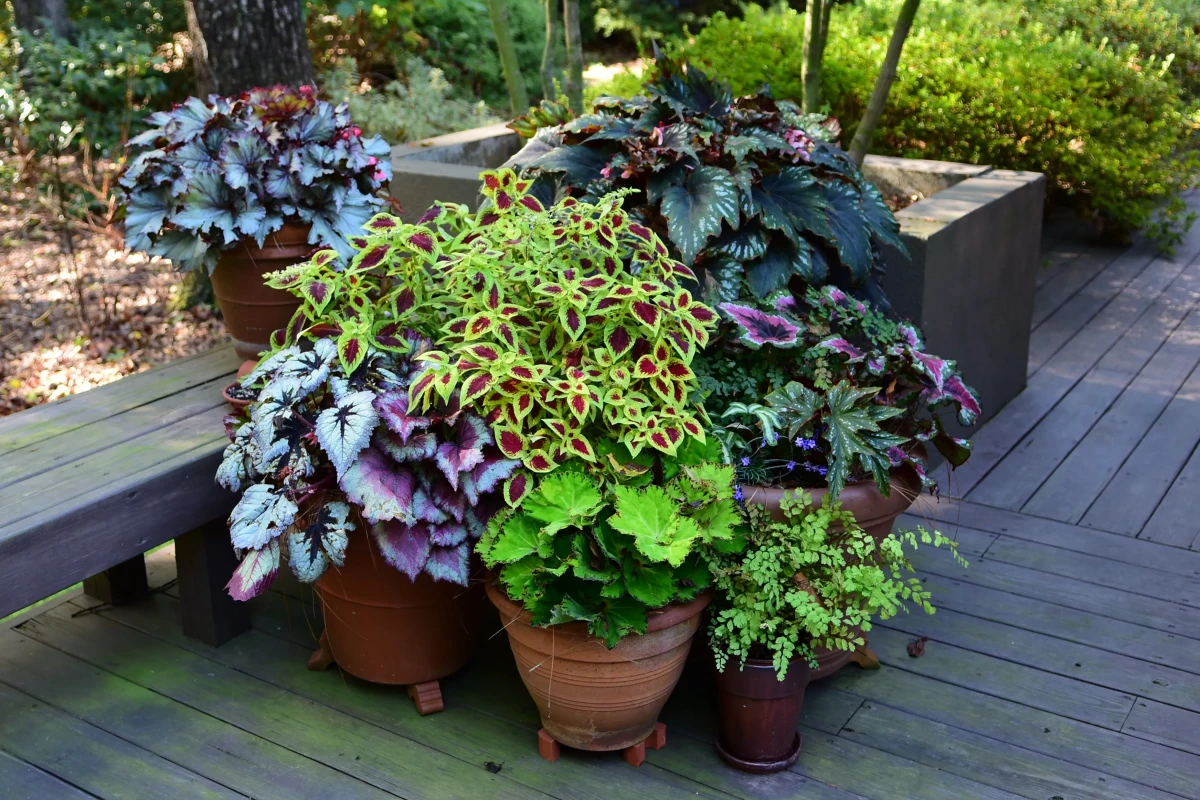
Self-Watering Planters
If you travel often, investing in a few self-watering planters is a total game-changer. They have a built-in water reservoir and a wicking system that gives the plant a drink whenever it needs one. In my office plant-care days, we used these exclusively. They let us go 2-4 weeks between waterings. While they have a higher initial cost, they are incredibly reliable and take all the guesswork out of it.
The Gold Standard: Outdoor and Advanced Setups
Automatic Drip Irrigation
For a patio full of pots or a vegetable garden, this is the way to go. A basic drip irrigation kit is surprisingly affordable and can be set up in an afternoon. You attach a timer to your hose spigot, and it sends water through tubing directly to the base of each plant. A starter kit for a small patio from a big box store like Home Depot will probably run you between $50 and $100. It’s an investment that pays for itself in healthy plants and pure peace of mind.
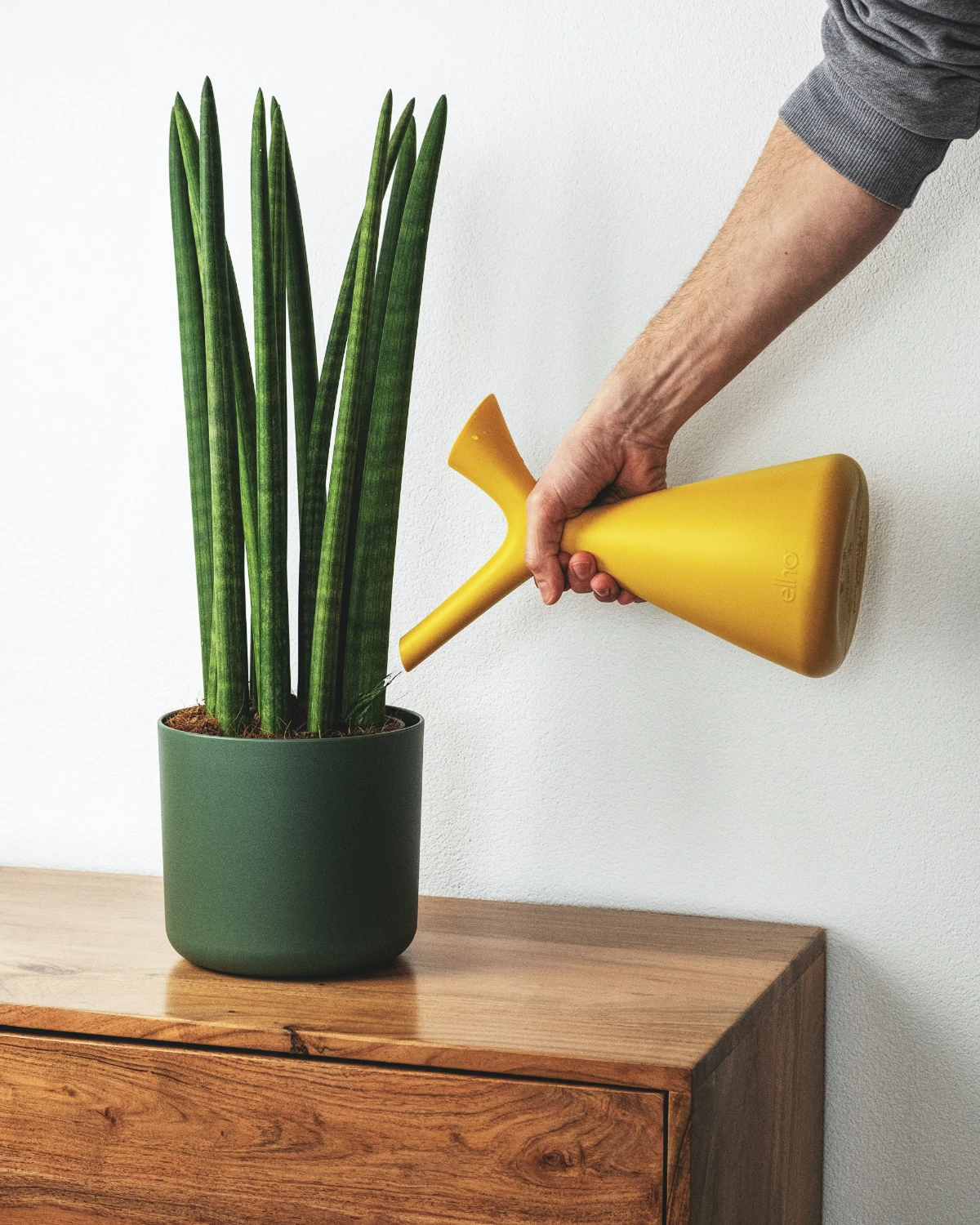
Oh yeah, a crucial safety note: always use a backflow preventer. It’s a simple device that stops irrigation water from siphoning back into your home’s drinking water. It’s a must-have for safety.
Don’t Forget Mulch!
For any plants in the ground or in large outdoor containers, mulch is your best friend. I can’t overstate this. A 2-3 inch layer of bark chips or shredded leaves insulates the soil from the sun, drastically cutting down on evaporation. It’s like a protective blanket for the soil. In a hot, dry climate, I’d even go with a thick 4-inch layer. In a more temperate, rainy area, 2 inches is plenty.
Your Pre-Vacation Plant Checklist
Feeling overwhelmed? Don’t be. Just run through this simple checklist before you head out the door.
- [ ] 1-2 Days Before: Give all plants a deep, thorough watering (bottom-soak if you can!).
- [ ] 1 Day Before: Prune off any dead leaves, flowers, or big buds.
- [ ] 1 Day Before: Move plants out of bright, direct sun and group them together.
- [ ] 1 Day Before: Set up and test your chosen watering system (wick, bottle, etc.).
- [ ] Final Check: Do a quick inspection for any pests before you huddle your plants together!
And that’s it! With a bit of prep, you can go enjoy your vacation knowing you’ll come back to a home that’s still green and full of life. Happy travels!
Inspirational Gallery
Create a simple and effective DIY self-watering system with just a few household items. It’s a classic for a reason!
- Find a large jar or vase and fill it with water. Place it next to your plant, but slightly elevated.
- Cut a length of cotton string or a strip from an old t-shirt. Natural, absorbent fibers work best.
- Push one end of the string several inches into the plant’s soil and submerge the other end in the water reservoir.
Capillary action will slowly draw water from the jar into the soil, providing a steady supply of moisture.
A study from the University of Florida found that grouping houseplants together can raise the immediate ambient humidity by up to 30%.
This simple trick, often called the “huddle method,” creates a beneficial microclimate. By clustering your plants together (ideally away from direct sun), you reduce air circulation around each individual plant, which in turn slows down transpiration—the process of water loss through the leaves. It’s a low-effort, high-impact strategy for any trip.
Is it a good idea to give my plants a ‘big gulp’ of water right before I leave?
While it seems logical, drenching the soil is a common mistake that can lead to root rot, especially for plants that won’t be in direct light. Water your plants thoroughly as you normally would, about 2-3 days before your departure. This allows the soil to be perfectly moist but not waterlogged, giving the roots access to water without drowning them. The goal is steady moisture, not a flood.
Watering Globes: These decorative glass or plastic bulbs are best for short getaways (3-7 days). You fill them with water and stick them in the soil. They’re visually appealing but can sometimes release water too quickly or get clogged with soil. A great, simple solution for less-thirsty plants.
Terracotta Spikes (Ollas): Products like Blumat Self-Watering Stakes use a porous terracotta cone that slowly leaches water into the soil from an attached tube connected to a reservoir. This method is highly efficient, providing water only when the soil begins to dry. They are fantastic for longer trips and for plants that are sensitive to overwatering.
For your most moisture-loving plants like ferns, calatheas, or alocasias, consider a temporary ‘plant spa’ in your bathtub. Place an old towel on the bottom of the tub to prevent scratches, and arrange your pots on top. Fill the tub with just an inch or two of water. This creates a high-humidity dome and allows the plants to absorb water from the bottom up. Just be sure the bathroom has a source of low, indirect light!
- Avoids encouraging new, thirsty growth.
- Reduces the risk of pests taking hold while you’re gone.
- Channels the plant’s energy into maintenance, not expansion.
The secret? Hold the fertilizer. Stop feeding your plants about two to three weeks before you leave. Fertilizing promotes new leaves and flowers, which demand significant water and energy, the very resources you want the plant to conserve while you’re away.
A pre-vacation trim is a pro move. Before you go, snip off any yellowing or dead leaves, as well as any flowers or flower buds. Flowers are huge water consumers. By removing them, you redirect the plant’s resources from blooming to simply staying hydrated and healthy until you return.
Don’t move your plants to a pitch-black room. While reducing light is key to slowing water consumption, all plants still need some light for photosynthesis to survive. A room with a north-facing window or a spot several feet away from a brighter window is ideal.










